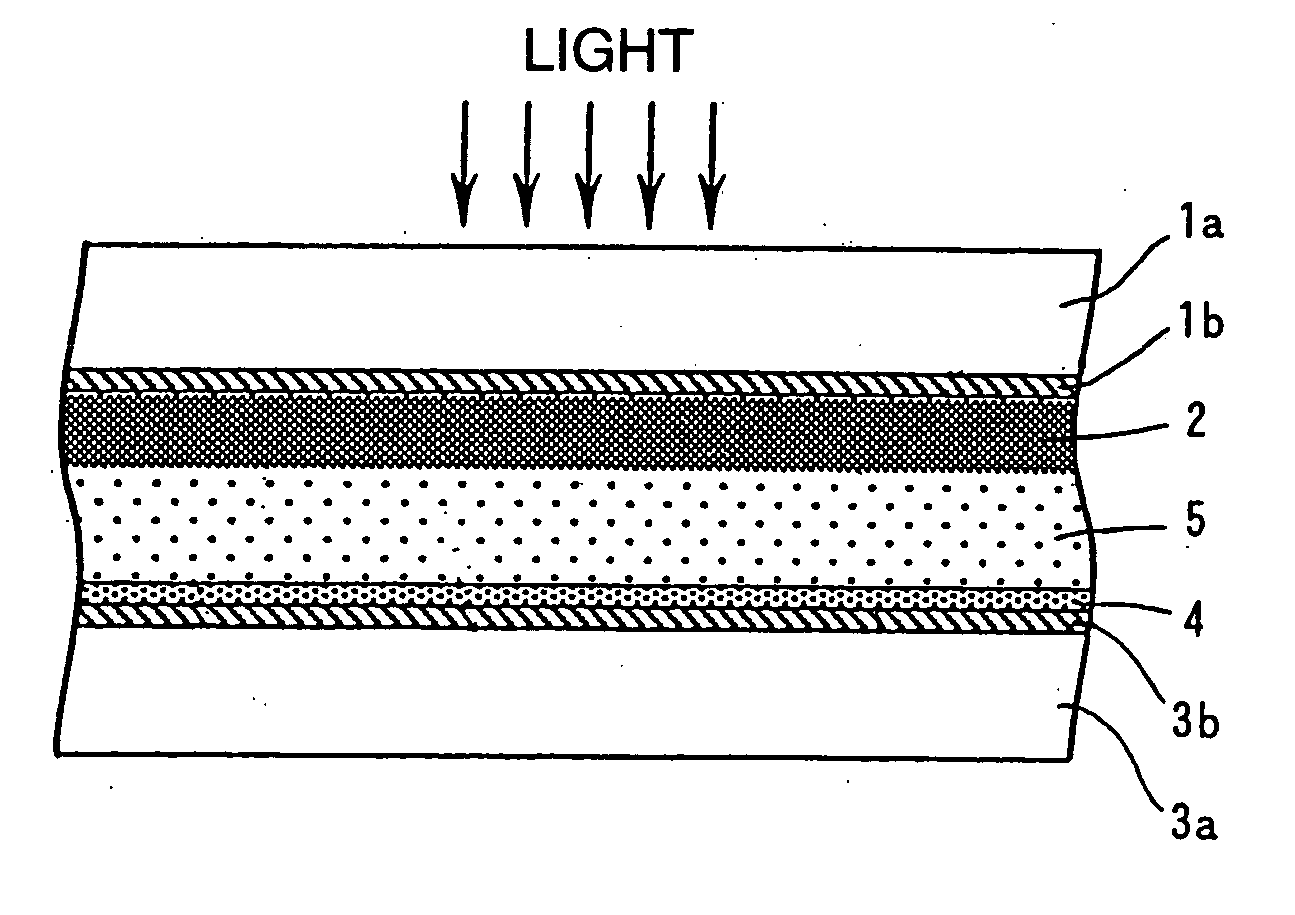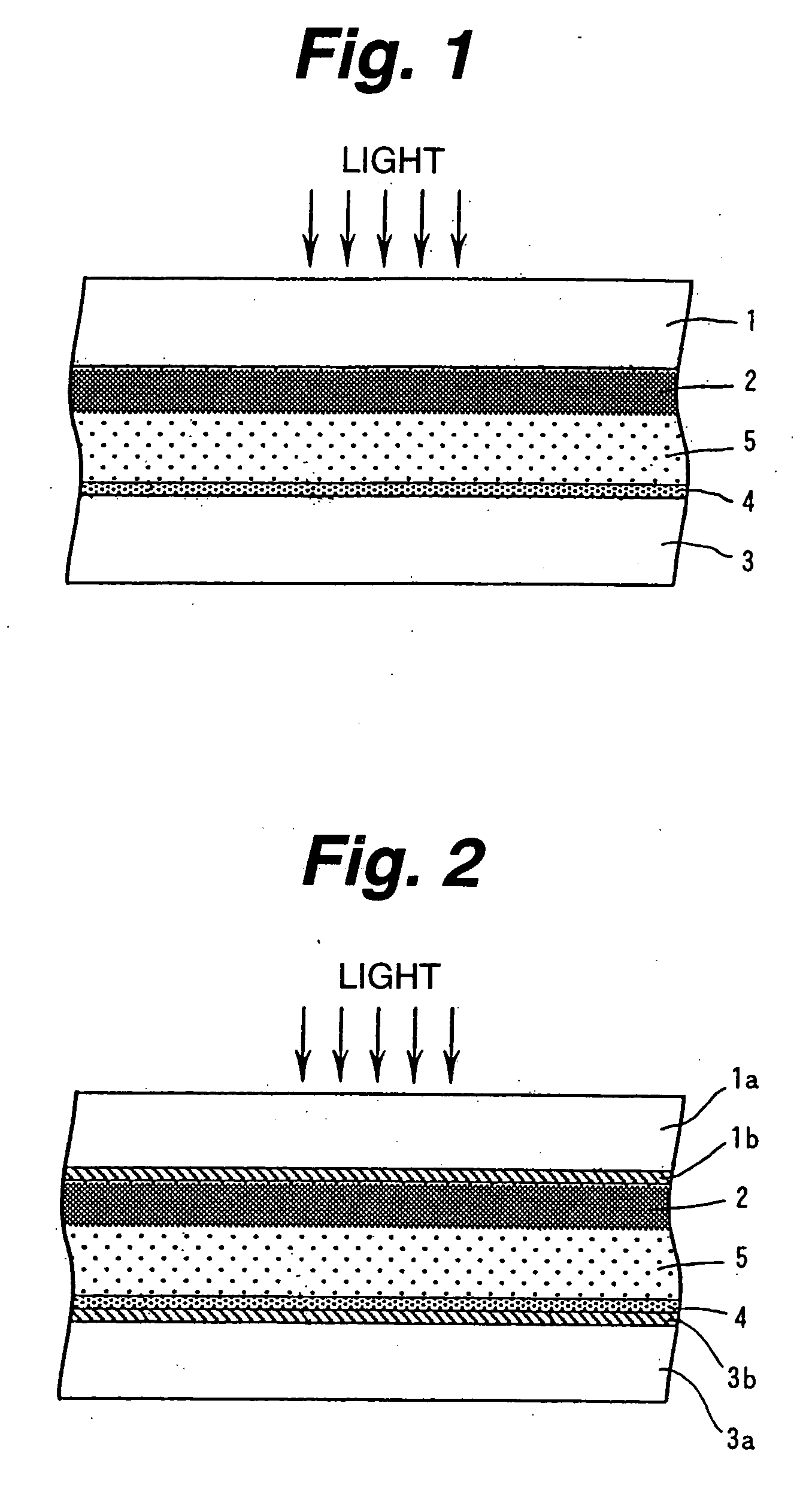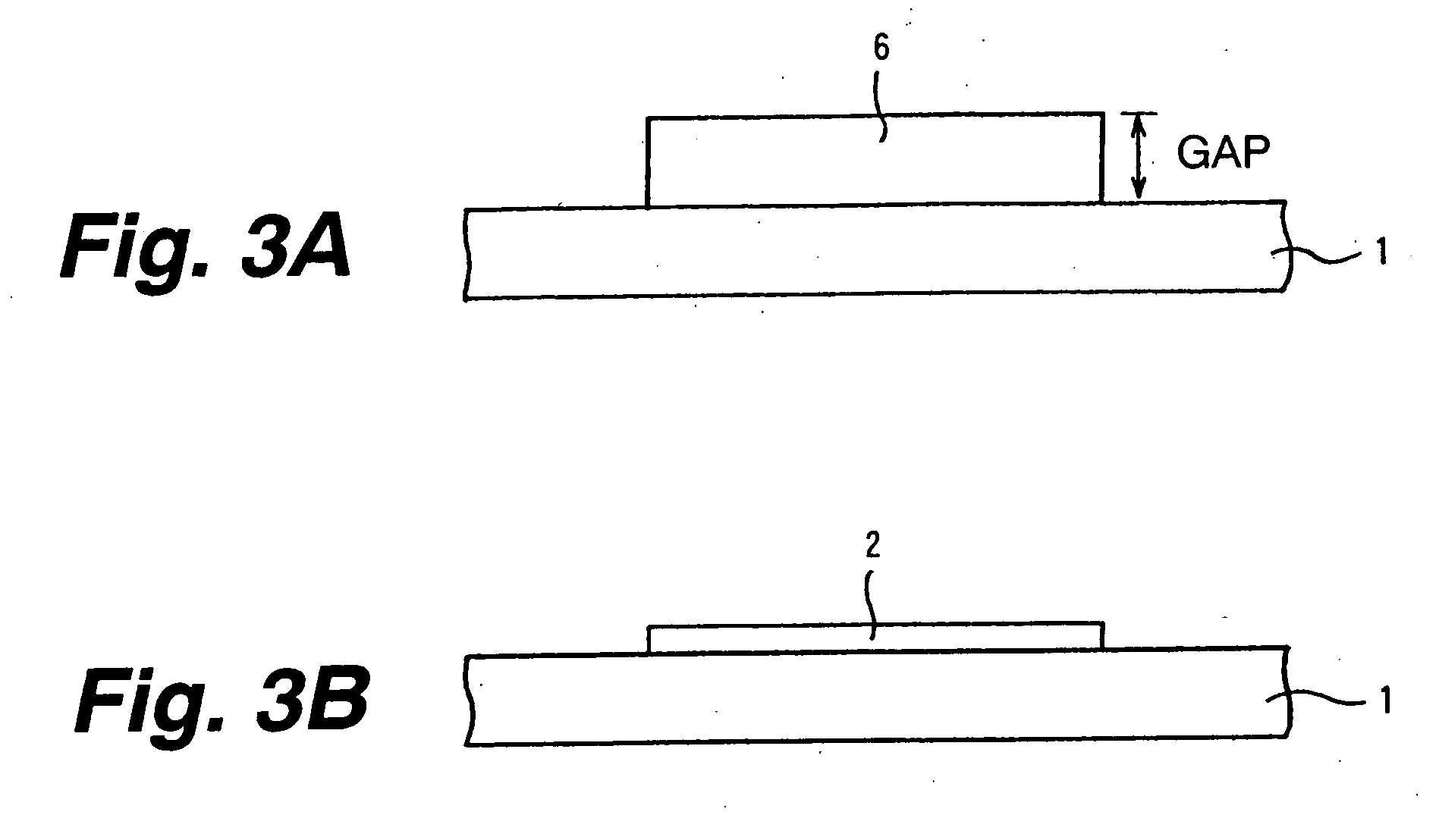Photoelectric conversion element and process for fabricating the same, electronic device and process for fabricating the same
a technology of photoelectric conversion and conversion element, which is applied in the direction of sustainable manufacturing/processing, final product manufacturing, electrochemical generators, etc., can solve the problems of only a small adverse effect on the global environment, a large risk of radioactive ray contamination of atomic energy, and the dependence on these kinds of energy is undesirable, so as to enhance the adhesiveness and flexibility of the semiconductor electrode, and enhance the durability of the semiconductor electrode
- Summary
- Abstract
- Description
- Claims
- Application Information
AI Technical Summary
Benefits of technology
Problems solved by technology
Method used
Image
Examples
example 1
[0081] TiO2 nanoparticles were used as semiconductor nanoparticles. Referring to known methods (H. Arakawa, “Latest Techniques of Dye-sensitized Solar Cells” (C.M.C.) p. 45-47 (2001)), paste with dispersed nanoparticles was prepared as follows. 125 ml of titanium isopropoxide was seeped slowly into 750 ml of 0.1M nitric acid water solution while stirring it at the room temperature. After the seeping, the solution was moved to a constant temperature bath held° at 80° C. and stirred therein for 8 hours. Thereby, a cloudy, semi-transparent sol solution was obtained. The sol solution was left to cool down to the room temperature, then filtered through a glass filter, and 700 ml thereof was measured up. The sol solution obtained was moved to an autoclave, then treated by water and heat at 220° C. for 12 hours, and thereafter dispersed by ultrasonic treatment for one hour. Subsequently, the solution was condensed by an evaporator at 40° C. until the content of TiO2 becomes 20 wt %. The co...
examples 2 to 6
[0088] Dye sensitized wet-type photoelectric conversion devices were prepared in the same manner as Example 1 except the pressing of the paste under the conditions shown in Table 1.
example 7
[0089] TiO2 paste prepared in the same manner as that of Example 1 was directly coated on a conductive PET substrate (having sheet resistance of 50 Ω / □) having SnO2 coating on its surface to be sized 1 cm×1 cm and make the gap of 200 μm by blade coating, and pressure of 10000 kg / cm2 was applied too the paste for 30 seconds at 120° C. by a press machine. On the dye-retained TiO2 paste nanoparticle layer thus obtained, the same dye-retained TiO2 paste was coated by another gap of 200 μm by blade coating to make a pressure-bonded dye-retained TiO2 nanoparticle layer under the same conditions.
[0090] After that, the substrate was immersed in a dehydrated ethanol solution in which 0.5 mM of cis-bis(isothiocyanate)-N,N-bis(2,2′-dipyridile)-4,4′-dicarboxylic acid)-ruthenium (II) dihydrate and 20 mM of deoxycholic acid for 12 hours to have the dye retained by the TiO2 nanoparticle layer. The dye-retained TiO2 nanoparticle layer obtained was washed first by ethanol solution of 4-tert-butyl p...
PUM
| Property | Measurement | Unit |
|---|---|---|
| softening temperature | aaaaa | aaaaa |
| temperature | aaaaa | aaaaa |
| temperature | aaaaa | aaaaa |
Abstract
Description
Claims
Application Information
 Login to View More
Login to View More - R&D
- Intellectual Property
- Life Sciences
- Materials
- Tech Scout
- Unparalleled Data Quality
- Higher Quality Content
- 60% Fewer Hallucinations
Browse by: Latest US Patents, China's latest patents, Technical Efficacy Thesaurus, Application Domain, Technology Topic, Popular Technical Reports.
© 2025 PatSnap. All rights reserved.Legal|Privacy policy|Modern Slavery Act Transparency Statement|Sitemap|About US| Contact US: help@patsnap.com



